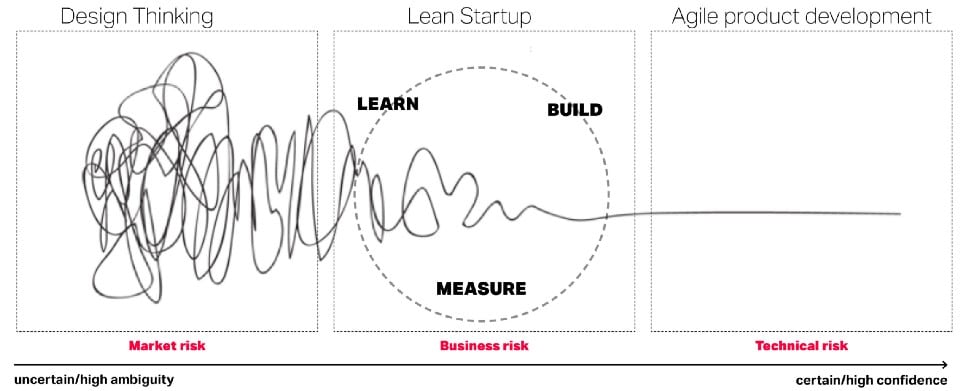Combining lean startup and agile with a design-led approach reduces business risk
By Stuart Creque  2 min read
2 min read

What if there is a way to govern innovation by combining these methods using a design-led approach? In the end, each method enables faster, cheaper and replicable-at-scale processes. How can Design help us be better and more efficient? How can Design and Lean Startup approaches coexist? What does lean mean in the context of innovation? How do you combine Agile and Design approaches? What is the role of the designer in all of this?
I am not the only person to think about these questions. Gartner introduced a model combining Design thinking, Lean Startup and Agile during the Gartner Symposium in 2016. Board of Innovation too has written extensively on this topic and claim “the challenge for organizations and project teams, however, is to understand how to use these methodologies optimally and when to shift up and iterate back and forth from one to the other. For their decisions, teams must rely upon specific innovation accounting, pre-defined KPI’s and experimentation validation metrics.”
Innovation governance is critical for organizations to benefit from integrated design capabilities. To explain governance, let’s start by looking diagrammatically at the innovation process. The squiggly line (above) is meant to illustrate the characteristics of the innovation process — uncertain in the beginning but converging in the end to a single point of clarity. From a design perspective, this means a divergence and convergence of ideas as we move from high uncertainty to high confidence in our solution. This progression is key to creating a successful unified model between Design thinking, Lean Startup, and Agile methodologies.